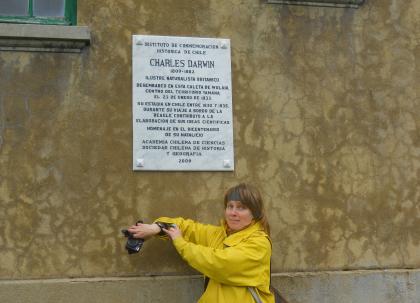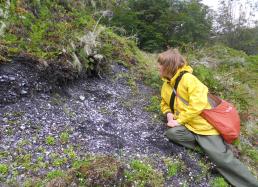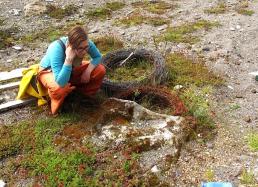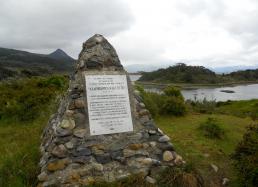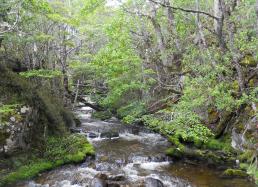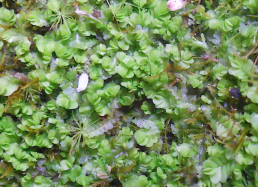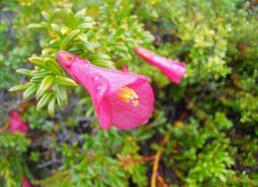Blog #7: People, Today & Long Ago
This morning, we arrived at Wulaia, a very historic settlement on the west coast of Isla Navarino. As soon as we reached the large building on shore that now houses a locked museum (but once was a radio station and even a slaughterhouse, according to Bill), we realized we were one day too late: 180 years ago, Charles Darwin arrived at Wulaia on January 23, 1833 (see above photo.)
The site was important even before this event, as evidenced by the shell middens (see Photo #1 below) from pre-European settlements of Yaghan, the indigenous people of Tierra del Fuego. (The name Tierra del Fuego means “Land of Fire,” so-named by Europeans who witnessed the many warming fires of the Yaghan along the archipelago’s beaches.) The areas that we’re surveying this year fall within the UNESCO Biosphere Reserve and Omora Ethnobotanical Park, which work to preserve both the planet's southernmost forests and the Yaghan’s history as the world's southernmost human culture.
I’m struck by the main difference in this year from last: people. Almost everywhere we’ve gone on this trip, I’ve felt the impact of other humans: at the ranch in Yendagaia, on the docks of Bahia Navidad, and along the shell middens left long ago by a legendary people. I know there were probably several sites last year that had once been settled by the nomadic Yaghan, but I was more naïve on that trip and often had the sense that I was in places never before visited by humans.
In a location like Wulaia, the human settlement provides new materials for bryophytes to grow (see Photo #2 below.) For example, Blanka collected some very nice specimens from the concrete-and-rock memorial obelisk commemorating Sir Robert FitzRoy, the captain of the HMS Beagle (see Photo #3 below, and check out my "Video Journal #8: Fieldwork.") I mostly collected along a river, picking up several species of fern from its lush banks (see Photo #4 below.)
And I found Lethocolea again (see Photo #5 below), the liverwort I was so happy to spy a few days ago near Puerto Williams. I’m not sure if this species has been recorded for Isla Navarino, but now I have two localities! The more we know about how widely distributed this plant is, the more we can understand the kinds of conditions it requires to thrive, and the better able we’ll be to make predictions about where other colonies might be found and how they might respond to environmental disturbances and climate change. Altogether, this information helps us develop conservation strategies for not only the species itself, but also for the general types of habitats where it grows.
In the afternoon, Neils, Paddy, Blanka, and I set off for Isla Milne Edwards, an island for which we have no collection records, so that means every species we collect here will be a new record! The whole of the island is covered in beautiful pink Philesia flowers (see Photo #6 below), which the crew later informed us were edible. Oh, well; too bad we didn’t know this earlier, so we could sample another Chilean delicacy.
I was hoping for a sighting of the native hummingbird (omora in the Yaghan language), for which the park is named. Not only is it the southernmost hummingbird in the world, but it’s also a revered hero in Yaghan cosmology. No such luck spotting the bird today, but maybe tomorrow….
More soon,
Laura

